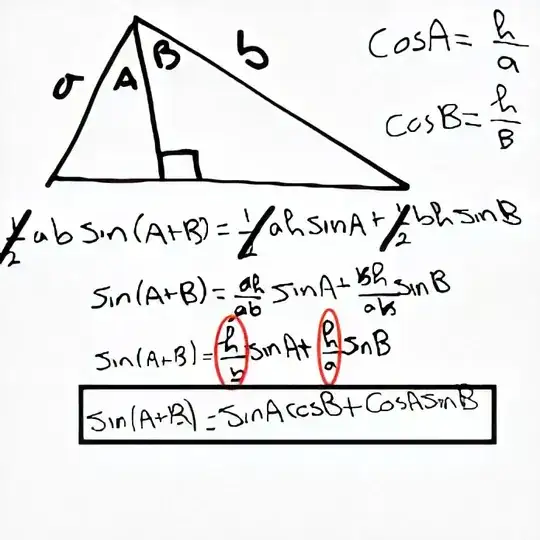My teacher showed us a proof for the compound angle formula by using a triangle and dropping a perpendicular line from an angle then getting the area of the triangle using sine rule (1) then getting it again by adding the area of the other two triangles (2) (created from the perpendicular line) then making (1) and (2) equal to each other.
I totally get the proof but not how it can be applied to obtuse, reflex and negative angles. I know about unit circle and how obtuse and reflex angles have sine just as their abtuse equivalent angles but I still don't get it. A visual proof will be tremendously appreciated!